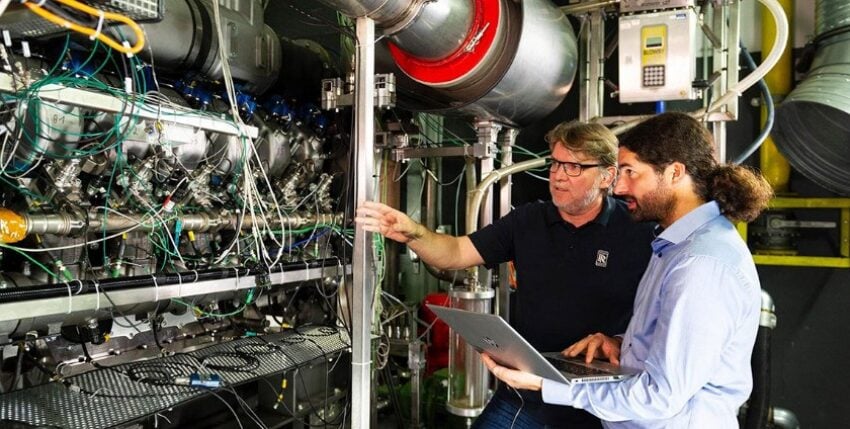From a press release by mtu / Rolls Royce Power Solutions
Politicians say that combustion engines will be obsolete from 2035. And mtu is currently developing a new hydrogen combustion engine for stationary power supply.
Engineers at Rolls-Royce are working in an interdisciplinary team to develop a piece of the future for a company that until now has mainly manufactured diesel and gas engines: the first hydrogen combustion engine. For two years The team is already working intensively on the challenging combustion process of hydrogen. This is because hydrogen is extremely flammable: if there is only a small amount of it in the air, a small spark is enough to ignite the mixture. Although the engineers have a lot of experience with mtu gas engines as the basis for the new hydrogen engines, there are major differences in the combustion process due to the pronounced tendency of the hydrogen-air mixture to ignite prematurely.
First hydrogen engines in 2024
The challenges need to be solved in the coming months. The first two mtu hydrogen engines are due to be delivered as early as January 2024. In combined heat and power plants at Duisburg inland port Duisport they will generate climate-neutral electricity and heat as part of Germany's first CO2-neutral container terminal. The enerPort project is currently still a research project, but the engines should be ready for series production and available to all customers as early as 2026. And with impressive performance data. The twelve-cylinder engine is expected to generate almost one megawatt of power. The engine has already proven that it can do this on the test bench.
Until then, a number of systems and assemblies still need to be developed, including larger turbochargers for more air flow, cylinders adapted to the higher ignition rate and optimised engine control. In contrast to the gas engine, hydrogen is only added to the charge air just before the cylinder in order to avoid uncontrolled combustion.
Conversion kit for existing gas engines
In parallel, the team is also developing a conversion kit for existing mtu gas engines. Hydrogen engines for the power supply are not yet in demand. This is because green hydrogen produced using energy from renewable sources is still difficult to obtain and is still far too expensive. But it won't stay that way. Hydrogen projects are on the rise all over the world and it can be assumed that the fuel will soon not only be available, but also economical. When that time comes, customers will be able to convert their existing gas engines to hydrogen engines with the conversion kit - or buy a gas engine today, safe in the knowledge that they can convert it to a hydrogen engine later.
Combustion engine and fuel cell
In addition to combustion engines, Rolls-Royce engineers are also developing fuel cells for stationary power supply. Customers can choose between combustion engines and fuel cells - both technologies generate green electricity, but have a different focus. Fuel cells are the first choice for customers who require a constant supply of electricity. Customers who also want to utilise thermal energy and operate a district heating network, for example, are more likely to opt for the hydrogen combustion engine in a classic combined heat and power plant.
Energy storage
Both the fuel cell and the combustion engine will play an important role in the future whenever energy needs to be stored. In the future, more and more electricity will be generated from renewable sources such as solar panels or wind turbines. In an ideal world, this renewable electrical energy would be produced precisely for use. But the world is not ideal, which is why storage options are required.
Hydrogen from electrolysers
If a lot of electricity is generated that cannot be used directly, it must be stored. This is done either in batteries or - in another form - as fuel, for example. Rolls-Royce is developing electrolysers for this purpose. In these electrolysers, water is broken down into its components oxygen and hydrogen in an electrochemical process using electrical energy. The hydrogen is stored in special buffer tanks so that it can be used to supply electrical and thermal energy in a fuel cell or in a combined heat and power plant with a hydrogen engine when wind turbines and photovoltaic systems are not supplying energy.










